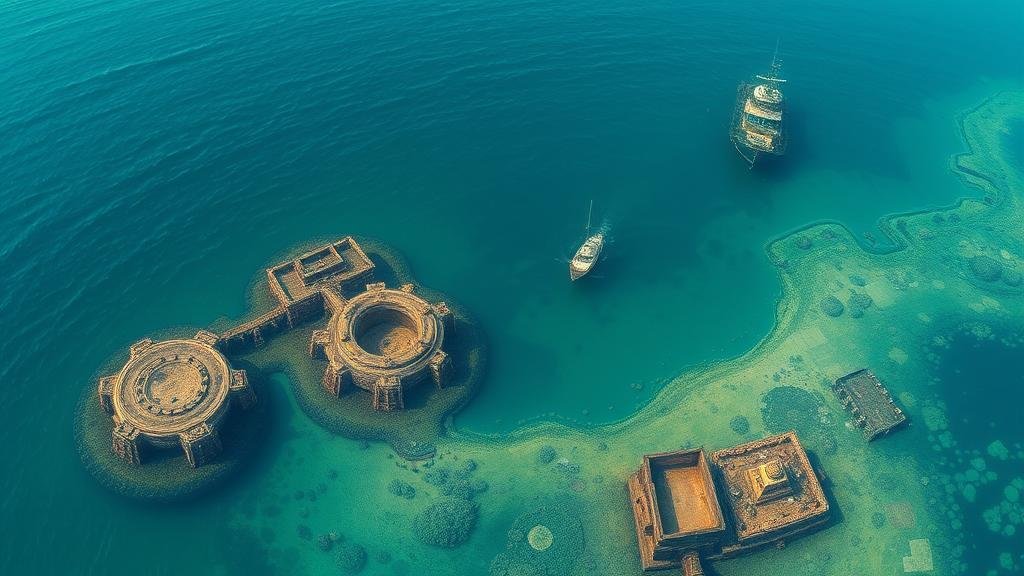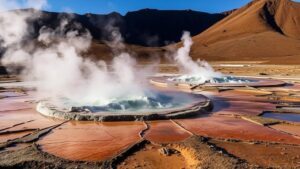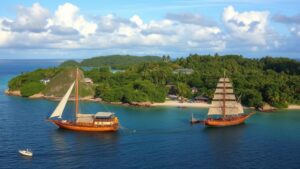Investigating the submerged cities along the eastern coastline of the Indian subcontinent.
Investigating the Submerged Cities Along the Eastern Coastline of the Indian Subcontinent
The eastern coastline of the Indian subcontinent is rich with history and mystery, featuring numerous submerged cities that have sparked significant interest among archaeologists, historians, and marine researchers. These underwater sites provide a glimpse into ancient civilizations that once thrived in this region. This article explores the submerged cities, their historical significance, and the ongoing investigations that aim to uncover lost narratives of human history.
The Historical Context of Submerged Cities
Throughout history, coastal cities have been vulnerable to natural disasters such as tsunamis, flooding, and rising sea levels. Indian subcontinent, particularly along its eastern coastline, has experienced several such events. As a result, many ancient cities have been swallowed by the sea. Prominent among these submerged sites are:
- Kudankulam, Tamil Nadu: Believed to date back to the 6th century BCE, evidence suggests that this city was once an essential trade hub.
- Mahabalipuram, Tamil Nadu: Famous for its rock-cut temples, some parts of this city have been submerged following dramatic shifts in sea levels.
- Dwarka: While primarily associated with Gujarat, the legends of the city extend down the eastern coast, with references to its lost structures.
Recent Discoveries and Research Efforts
In recent years, underwater explorations have unveiled intriguing findings. Archaeological Survey of India (ASI) and various academic institutions have initiated multiple projects to investigate these submerged cities. Notable discoveries include:
- Structures and Artifacts: Underwater surveys have revealed remains of walls, pillars, and artifacts like pottery and tools that suggest organized urban settlements.
- Satellite Imaging and Marine Surveys: Advanced technology has allowed researchers to map the seafloor, providing insights into the extent of these submerged cities.
- Geological Studies: Understanding the geological history of the area helps explain how these cities became submerged.
Challenges in Underwater Archaeology
Investigating submerged cities poses unique challenges, including:
- Visibility and Accessibility: Poor visibility underwater makes it difficult to explore and document findings effectively.
- Environmental Concerns: Marine ecosystems can be sensitive, and excavation efforts must mitigate the impact on these habitats.
- Funding and Resources: Securing adequate funding for prolonged underwater projects often poses a challenge for research teams.
Real-World Significance and Insights
The submerged cities along the eastern coastline of the Indian subcontinent offer valuable insights into ancient societies, their architectural styles, trade practices, and social structures. Understanding these civilizations can inform contemporary discussions on:
- Climate Change Adaptation: By studying how ancient communities adapted to rising sea levels, modern societies can learn valuable lessons about resilience.
- Cultural Heritage Management: Preservation of underwater heritage sites fosters cultural identity and tourism opportunities.
Actionable Takeaways
For those interested in maritime archaeology or cultural heritage, consider the following:
- Stay informed about ongoing research projects and findings to deepen your understanding of this field.
- Support initiatives aimed at preserving submerged cultural heritage through donations or participation in awareness campaigns.
- Encourage local and governmental support for research funding to continue uncovering the rich history of coastal civilizations.
To wrap up, the submerged cities along the eastern coastline of the Indian subcontinent are not just remnants of a forgotten age; they are an essential chapter in the grand narrative of human civilization. Ongoing investigations promise to reveal more about these lost cities and what they can teach us about our past and future.



